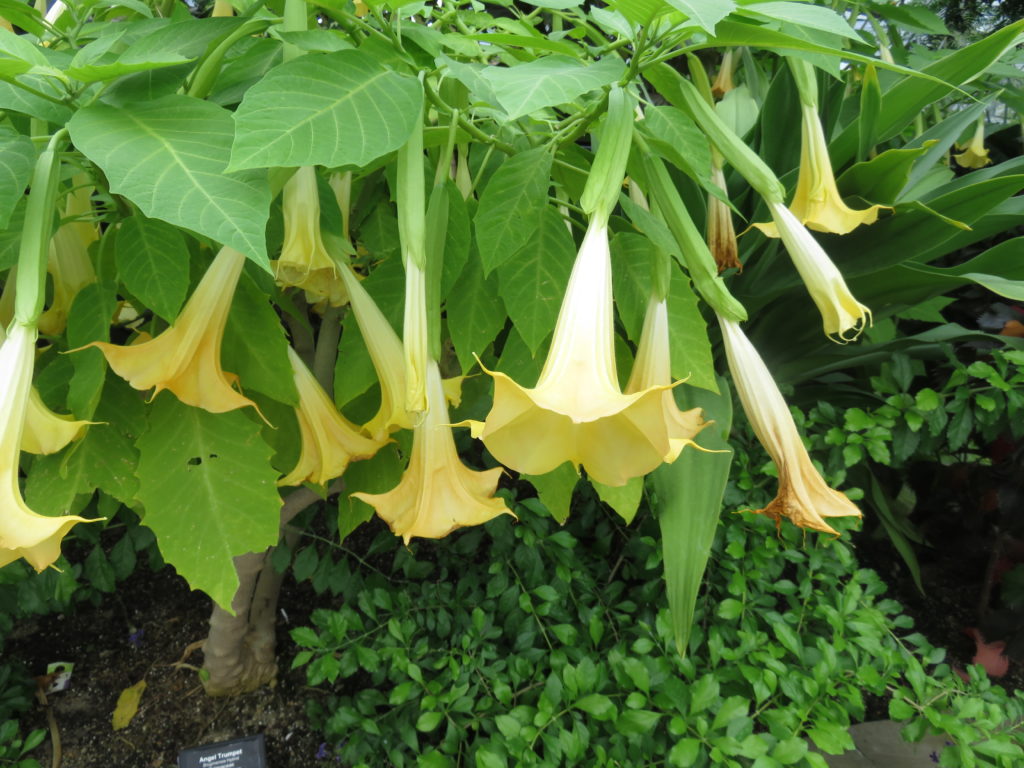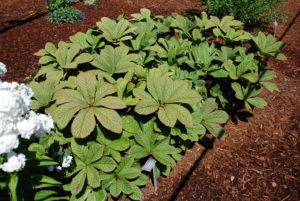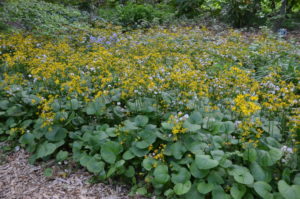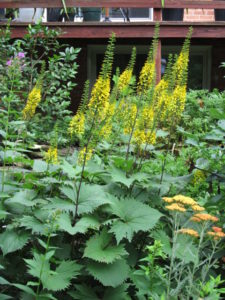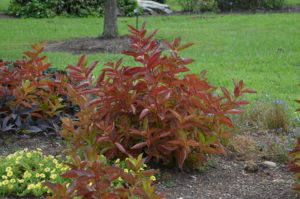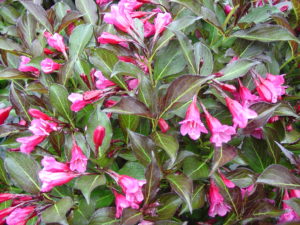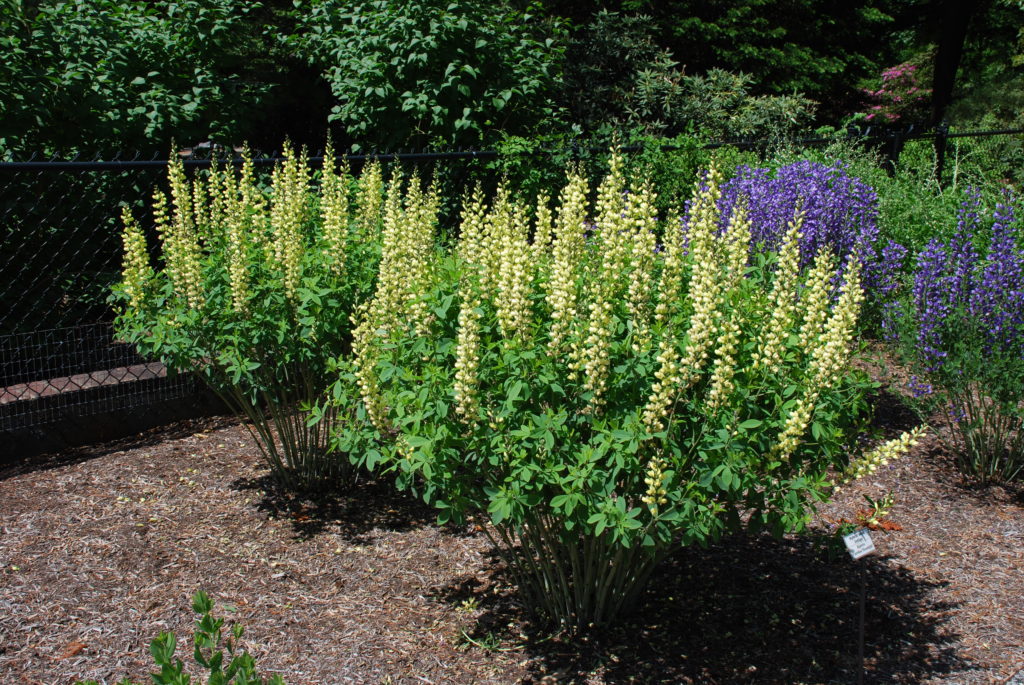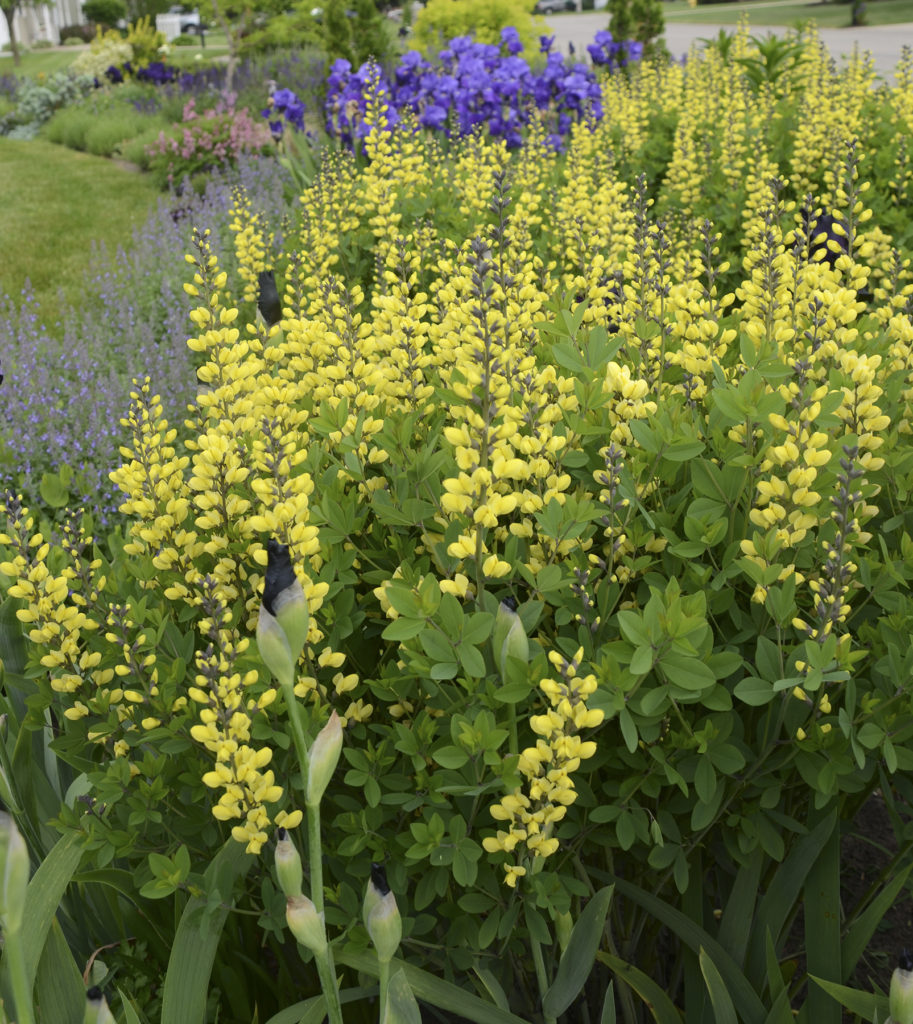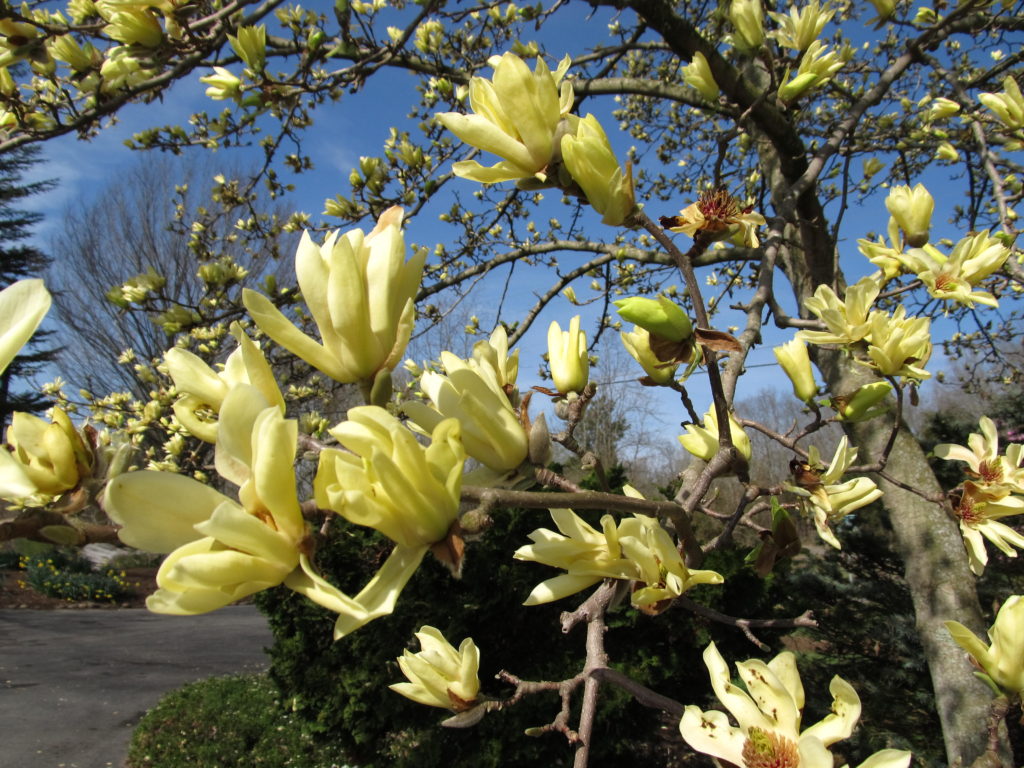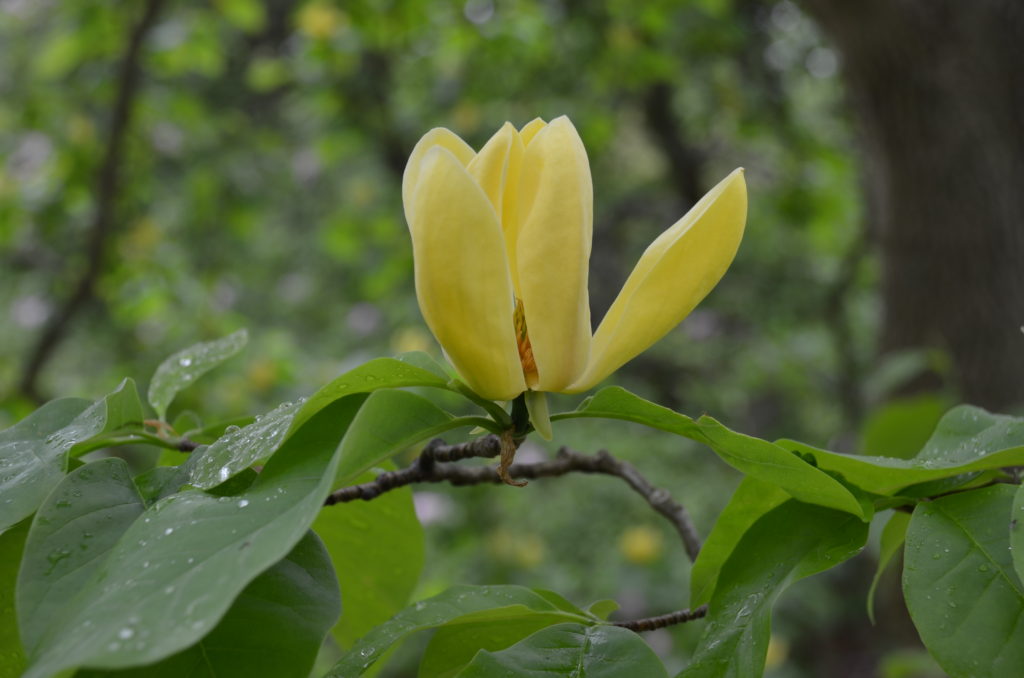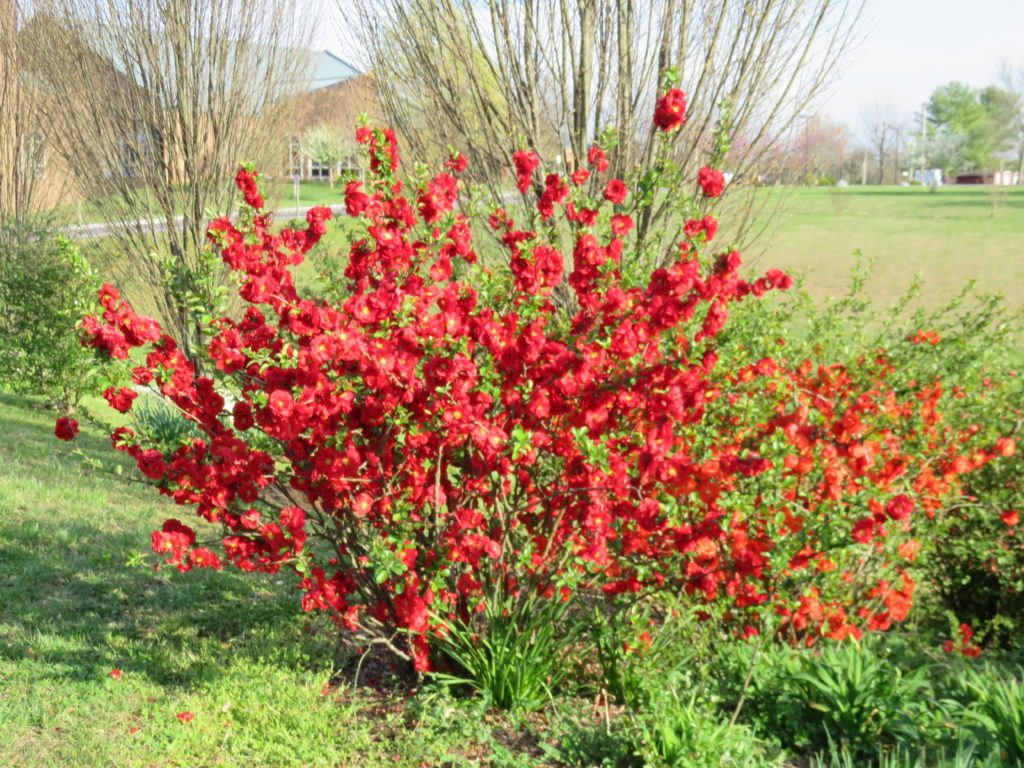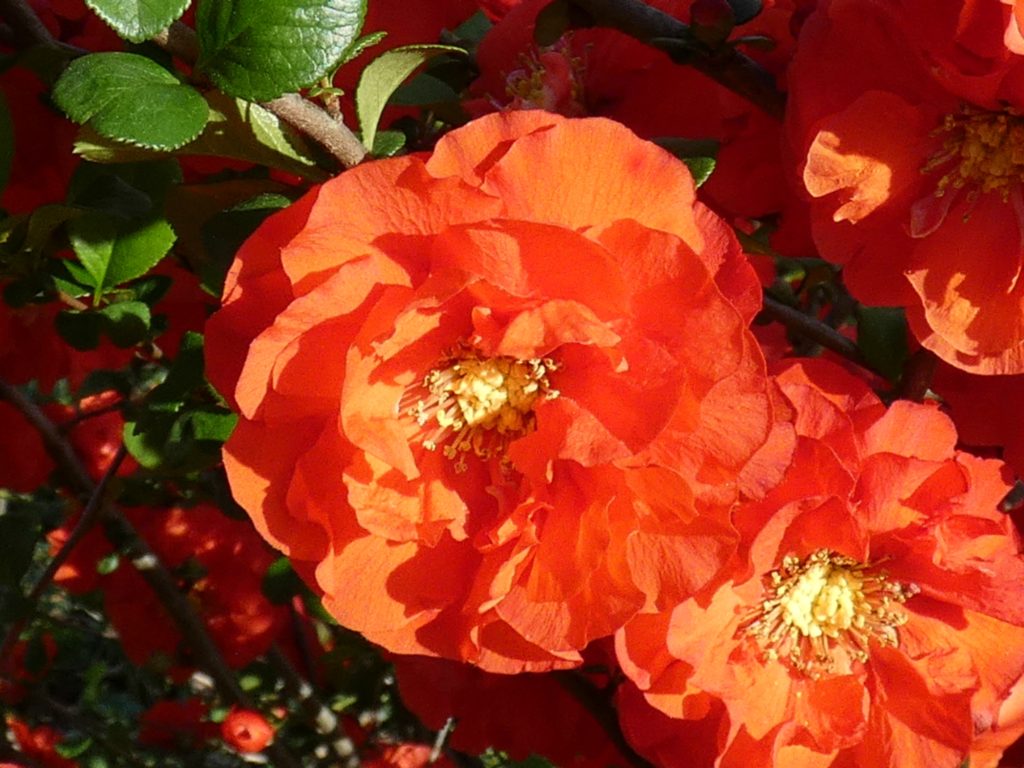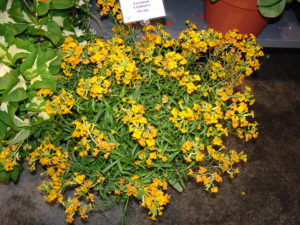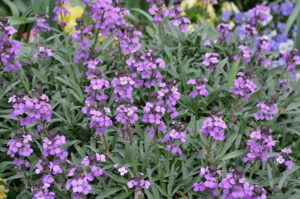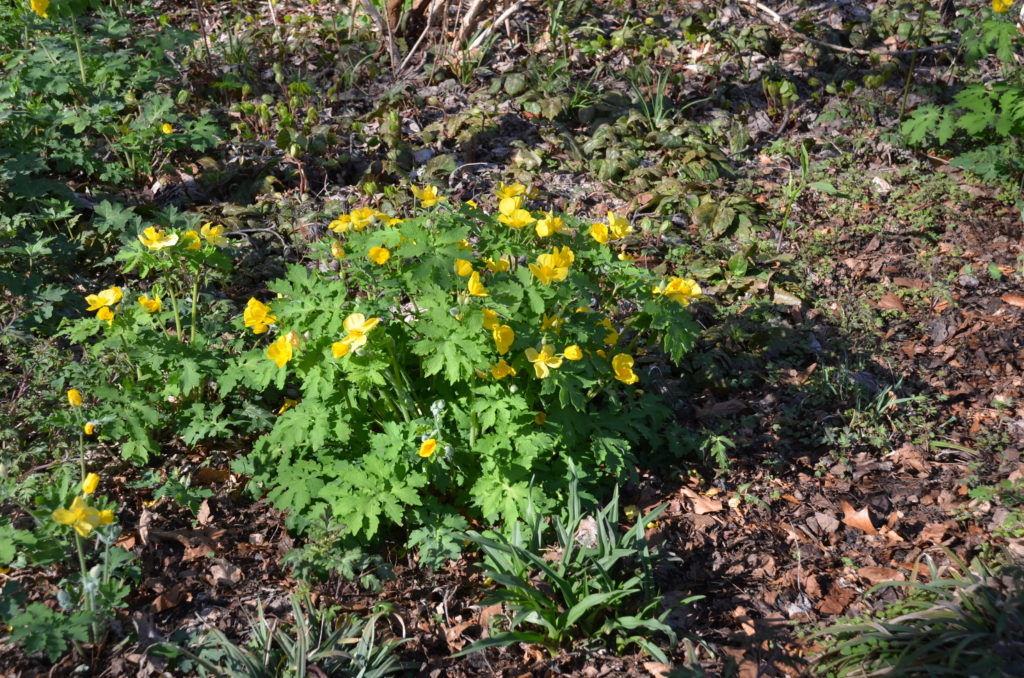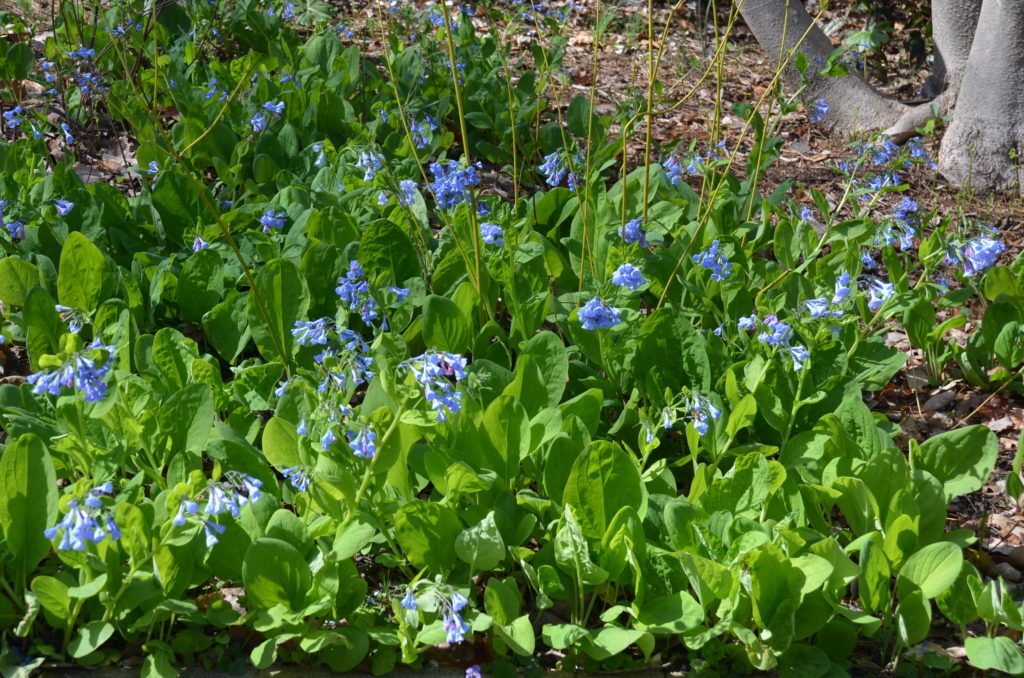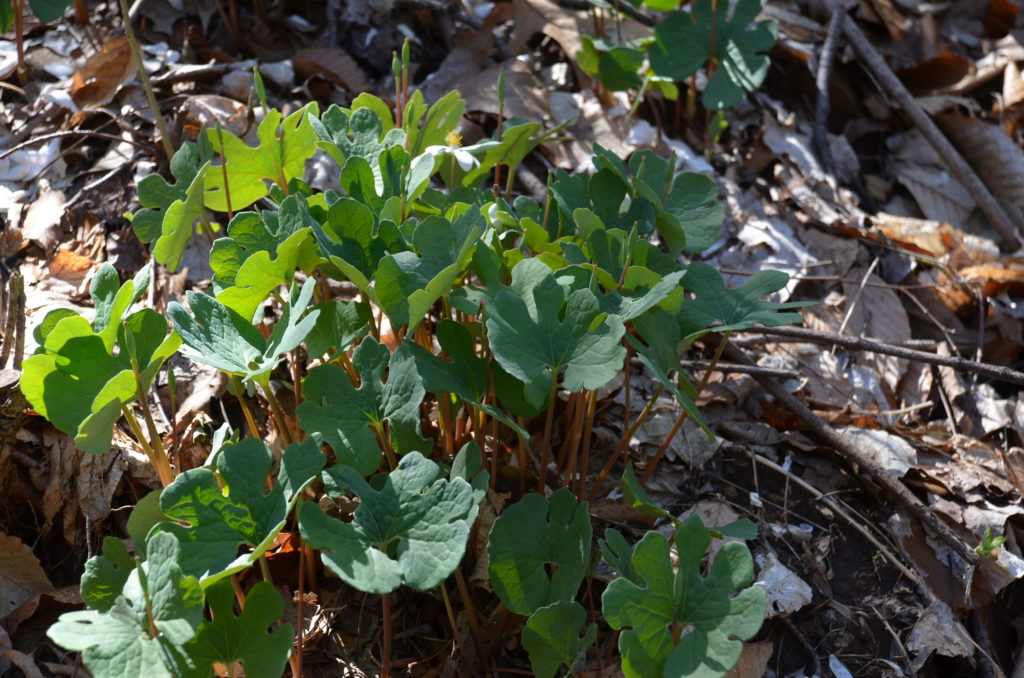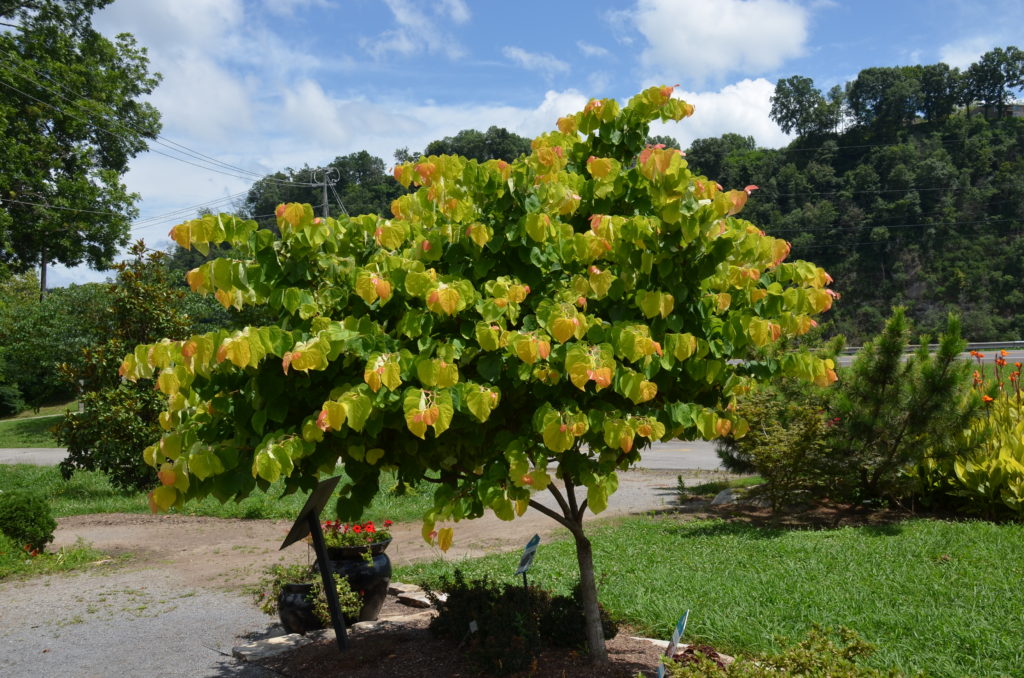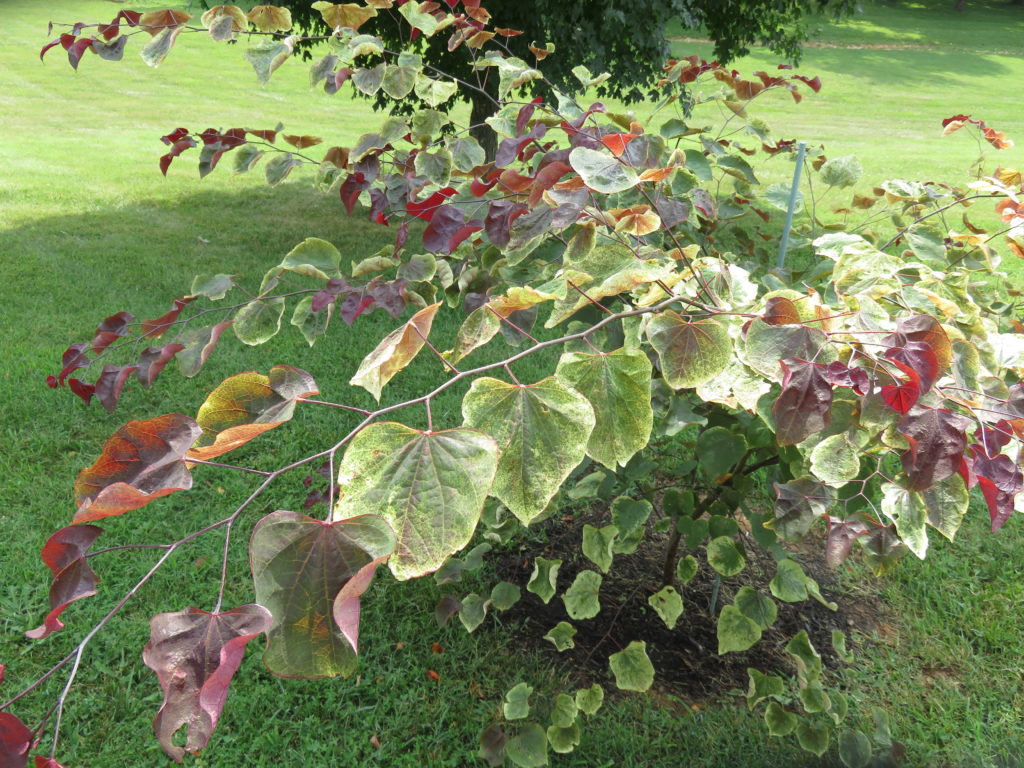Golden Chain Tree (Laburnum anagyroides) is a small deciduous tree or large shrub. This small landscape tree is a member of the Bean Family (Fabaceae) and is native to central Europe (USDA hardiness zones 5 to 7).
It is rated as a short-lived tree that grows to 25 or 30 feet in height as a tree and 15-20 feet tall as a multi-stemmed shrub.
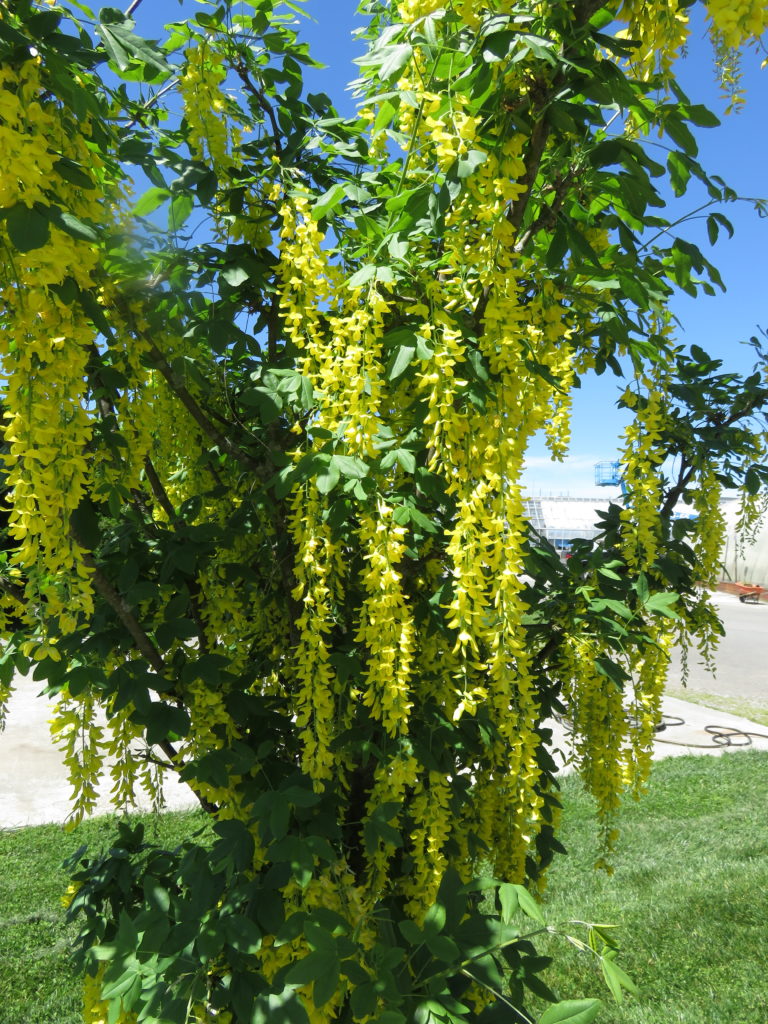
Each leaf is composed of three leaflets, long-stalked (petioled), and arranged alternately on the stem. Foliage appears first before flowers. The pea-like golden flowers form in long drooping clusters. Long, dangling, multi-clusters of bright yellow, wisteria-like flowers are a spectacular sight in late spring. Long flattened bean-like pods soon develop and ripen in early fall. The popular hybrid form ‘Voss’ tends to produce fewer pods than either of its parents.
Golden Chain Tree grows in full to part sun, but prefers light shade in mid-afternoon (Zones 6-8). It is a fairly easy grower in any well drained soil. The tree often fails when planted on water logged ground. Regarding soil pH, it grows well in slightly acidic, neutral, or slightly alkaline soils.
Young trees should be staked for support and trained to develop a strong central leader. Prune out weak secondary leaders and promote strong lateral branches. This weak wooded tree may be broken by winter ice storms. Annual spring pruning help to rejuvenate the tree’s framework.
Cultivar: ‘Voss’ Golden Chain Tree (Laburnum x watereri ‘Vossii’) is cultivated hybrid cross between two species – L. alpinum and L. anagyroides. The cultivar, introduced in Holland in the late 19th century, is rated as slightly more heat tolerant. Voss was selected for its more dense growth habit and long flowering racemes of up to two feet.
All parts of this plant are HIGHLY TOXIC (poisonous). Keep pets and children away from the tree. Stem cankering (pitting), leaf spot diseases and aphids may be occasional problems.
Golden Chain Tree is primarily available from on-line specialty nurseries.
Golden Chain Tree

